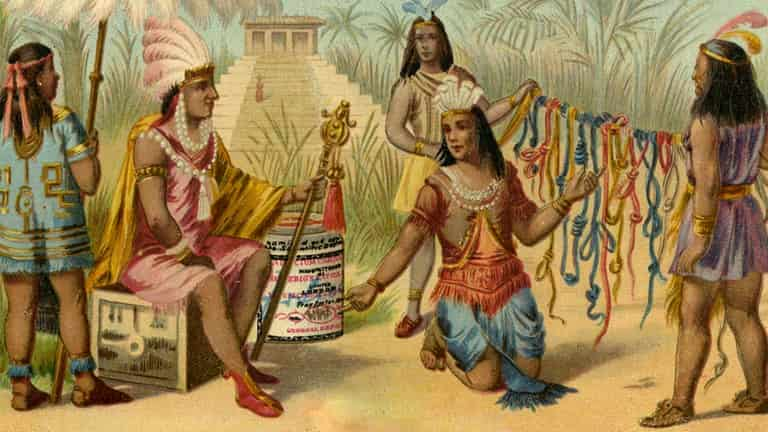The Inca Empire, known as Tawantinsuyu, was the largest empire in pre-Columbian America, spanning from present-day Ecuador to central Chile. While Peru is often considered the heartland of the Incas, their influence extended into what is now Argentina. This article explores the Inca presence in Argentina, focusing on their expansion, governance, cultural impact, and lasting legacy.
The Expansion of the Inca Empire into Argentina
The Inca Road to the South
The Incas began expanding into Argentina during the late 15th century, under the reign of Túpac Inca Yupanqui and his successor Huayna Capac. The empire extended southward through present-day Bolivia and into the northwestern region of Argentina, an area historically inhabited by indigenous groups such as the Diaguita and the Omaguaca.
The Inca expansion into Argentina was facilitated by their sophisticated road network, the Qhapaq Ñan, which connected major settlements across the empire. This extensive system of roads allowed for efficient communication, transportation of goods, and military movement.
Military Conquest and Resistance
While the Incas successfully incorporated many indigenous groups into their empire through diplomacy, others resisted their rule. The Diaguita people, for instance, engaged in prolonged resistance against the Incas. The Incas, however, employed their military and administrative strategies to integrate these groups into their empire, often through a combination of warfare and alliances.
Inca Influence in Northwestern Argentina
Urban Centers and Architecture
One of the most significant Inca settlements in Argentina was Tastil, an archaeological site in Salta. This settlement, along with others like Tilcara and La Paya, showcased typical Inca urban planning, including agricultural terraces, administrative buildings, and storehouses (qullqas).
The Pucará de Tilcara, a fortified city in Jujuy, is another example of Inca architecture blending with local traditions. This site was a strategic military and administrative center used to control trade and maintain order in the region.
Agriculture and Terracing
The Incas introduced advanced agricultural techniques, including andenes (terraces), which allowed for efficient farming in mountainous terrain. They also implemented irrigation systems to optimize water usage, benefiting crops such as maize, potatoes, and quinoa. These techniques significantly improved food production in the region and are still in use today.
Religion and Cultural Integration
The Incas imposed their religious beliefs but also allowed a degree of syncretism with local traditions. They worshiped Inti, the sun god, and conducted ceremonies in sacred sites (huacas). In Argentina, important ceremonial sites include the Llullaillaco volcano, where archaeologists discovered well-preserved mummies of Inca child sacrifices, known as the Children of Llullaillaco. These sacrifices, part of the Capacocha ritual, were offerings to the gods to ensure prosperity and harmony.
The Fall of the Inca Empire and Spanish Colonization
The Collapse of Tawantinsuyu
By the early 16th century, the Inca Empire was weakened by internal conflict and disease brought by European explorers. The Spanish, led by Francisco Pizarro, conquered the Inca Empire in 1532. However, the Inca influence persisted in Argentina, as many local communities retained their traditions despite Spanish colonization.
Resistance and Survival
After the fall of the empire, remnants of Inca rule remained in northern Argentina. Indigenous communities continued practicing Inca agricultural techniques, religious ceremonies, and linguistic elements of Quechua. Even today, many aspects of Inca culture are preserved in the traditions of the indigenous peoples of northwestern Argentina.
The Legacy of the Incas in Argentina
Modern Cultural Influence
The Inca presence in Argentina is still visible in various aspects of contemporary culture. Festivals such as Inti Raymi (the Festival of the Sun) are celebrated in certain regions, showcasing the enduring influence of Inca traditions.
Additionally, archaeological sites like Tilcara and Llullaillaco attract researchers and tourists interested in Andean history. Museums in Salta and Jujuy display artifacts that highlight the cultural exchange between the Incas and local groups.
Linguistic and Social Influence
While Spanish is the dominant language, many indigenous communities in northwestern Argentina still speak Quechua, the language of the Incas. Quechua words have also influenced the Spanish dialects spoken in the region.
Social structures influenced by the Incas, such as communal labor systems (minka), continue to shape indigenous communities, emphasizing cooperation and collective responsibility.
The Inca presence in Argentina, though often overshadowed by their influence in Peru, played a crucial role in shaping the culture and history of northwestern Argentina. Through their architectural achievements, agricultural advancements, and religious practices, the Incas left an enduring mark on the region. Today, their legacy lives on through archaeological sites, cultural traditions, and indigenous communities that continue to preserve and celebrate their heritage.

